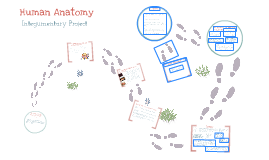Human Anatomy.
Transcript: - All my definitions are found at dictionary.com annd my pictures were taken from google.com The rest of my information is from the Human Anatomy Book. The skin disorders were found on fox2 news.com The functions of the Integumentary System are: Maintain Body Temperature, Protection, Perception of Stimuli, Excretion, Synthesis of Vitamin D, Immunity, and Blood Reservoir. Dermis: the dense inner layer of skin beneath the epidermis, composed of connective tissue, blood and lymph vessels, sweat glands, hair follicles, and an elaborate sensory nerve network. Sebaceous glands: any of the cutaneous glands that secrete oily matter for lubricating hair and skin. Epidermis: the outer, nonvascular, nonsensitive layer of the skin, covering the true skin or corium Nerve: one or more bundles of fibers forming part of a system that conveys impulses of sensation, motion, etc., between the brain or spinal cord and other parts of the body. Asymmetry: the two sides of the pigmented spot or mole do not match. Border Irregularity: the borders of the lesion are not smooth but exhibit indentations. Color: the pigmented spot contains areas of different colors: blacks, browns, tans,and sometimes blues and reds. Diameter: the spot is larger than six millimeters in diameter, which would be the size of a pencil eraser. All About Me (: Hair Follicle:a small cavity in the epidermis and corium of the skin, from which a hair develops. 3. Seborrheic DermatitisSeborrheic dermatitis, which causes oily, waxy patches to develop on the scalp, is distinct from other forms of dermatitis. I have over 200 community service hours. I have applied to 6 colleges. The admission expectations for the colleges of my choice are both ACT and GPA. I'm looking forward too going in to Physical Therapy, and Cosmetology. I have started my FAFSA! Describing the layers of the skin location and function: Pacinian Corpuscles:a microscopic, onionlike body consisting of layers of connective tissue wrapped around a nerve ending, located in the deep layers of skin, tendons, etc., and functioning as a sensory receptor of pressure and vibration. Epidermis; The epidermis is the outer layer of skin. The thickness of the epidermis varies in different types of skin. The bottom layer, the stratum basale, has cells that are shaped like columns. In this layer the cells divide and push already formed cells into higher layers. As the cells move into the higher layers, they flatten and eventually die. The top layer of the epidermis, the stratum corneum, is made of dead, flat skin cells that shed about every 2 weeks. 1. Acne Acne is a skin disorder that causes pimples when the passageway that connects the skin’s pores to the oil glands becomes clogged. First degree burns only affect the outermost layer of skin, the epidermis. These cause slight swelling and redness and are fairly painful. Second degree burns affect the epidermis and the dermis. These burns are very painful and cause the skin to turn bright red and blister. Third degree burns affect the entire skin, including hair follicles, sweat glands, oil glands, blood vessels, and other structures. These burns aren't painful because even the pain receptors have been damaged, and are often leathery, white, brown, or tan in color. Human Anatomy 1st Degree Burn 5. Psoriasis Psoriasis is a chronic and disfiguring genetic disease. It is a buildup of excess skin tissue that looks red and thick and is covered with silvery scales. It first appears on the elbows and knees, but can spread to other parts of the limbs and even the trunk. Certain forms affect particular areas like the hands, scalp or the joints. Subcutaneour/hypodermis: situated or lying under the skin, as tissue. Define: 2. Eczema — Atopic dermatitis is the most common and is seen most often in children. One to three percent of adults compared to 10 to 20 percent of children have this long-term genetic disease, which causes itchy rashes in the crux of the elbows and behind the knees. Integumentary Project 3rd Degree Burn The functions of the Integumentary system are: Five types of Skin Disorders or Ailments: Adipose:fatty; consisting of, resembling, or relating to fat. Differences between 1st, 2nd and 3rd degree burns: 2nd Degree Burn What's the ABCD rule and what does it mean:? Work Cited page. Exocrine Glands: any of several glands, as the salivary glands, that secrete externally through a duct. 4. Skin CancerSkin cancer is the most common type of cancer in the United States. Melanin: any of a class of insoluble pigments, found in all forms of animal life, that account for the dark color of skin, hair, fur, scales, feathers, etc.

















